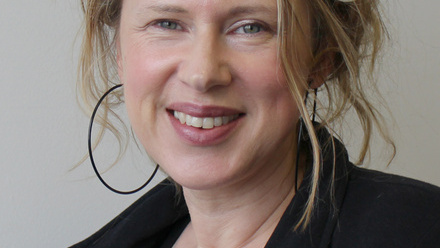2021 reflections: employees’ wellbeing and work-life blend are central to employers’ priorities

Lead from purpose, and for inclusion
Peter Cheese, chief executive of the CIPD, addressed the large in-room and virtual audiences in front of a picture of white herons in flight, bearing the words: ‘Leading from purpose and principle – responsible business, good work, inclusion’.
“Crises catalyse change” Cheese reminded us, “as in Darwinian evolution, so with the pandemic”. He pointed to the new CIPD report: Responsible business through crisis: Senior leaders on building new cultures of trust, which explores how leaders have responded, and the critical importance of trust.
As Cheese views it: think less about a ‘great resignation’ and more about ‘the great reset’. People have new expectations, including how the organisation looks after them and whether they are in the right career.
Multiple stakeholder views are important: “that starts with the people who work for us and with us” as well as customers, the community, the environment. There is an increasing expectation of transparency. We must lead for inclusion: “it can’t just be people with nice houses who work at home: we have to do better”. We also need “action on racial inclusion” and fair, open, inclusive cultures for all, in which we celebrate differences.
Wellbeing: the bridge between skills and whole people
A further theme picked up by Cheese was the question of ‘skills’ and our stance as employers in acquiring those. He quotes Sharlyn Lauby and Eva Sage-Gavin’s models: ‘buy, build, borrow, or bot’. Talent can be hired in, upskilled, borrowed (by outsourcing or contracting) or it can be replaced by AI.
He comments that “truck drivers were a pre-existing challenge” and could be replaced by driverless vehicles. However, he comments that we may now be “coming back to the centrality of the human” in the sense of Aristotle’s eudaimonia, the concept of striving for the highest human good. “The CIPD over 100 years ago was the Welfare Workers Association”, he reminds the attentive audience.
“The pandemic was a human crisis…we’ve remembered that wellbeing is essential”. It might be time, Cheese suggests, to compare the present with the philosophy behind historic communities such as Port Sunlight. Built by the Lever brothers (of Unilever), that model village housed soap factory workers and also educated their children, provided an art gallery, open air swimming pool, hospital and more. Employing people was more than a mere transaction or acquisition of skills.
New attitudes to work in our multistage lives
Professor Lynda Gratton – future of work thought leader and Professor of Management Practice at London Business School – feels obliged to keep on working and writing, despite being ‘tired’, she tells delegates. She did warn us, in 2018, to ready ourselves for the 100-year life in which we should no longer expect a full-time education, then full-time work, then full-time retirement. “Every 10 years we live two to three years longer. If we live to 90, unless we’ve saved lots, we will be working into our 70s’,” she explains.
So, her insightful books keep coming. One of her latest, The New Long Life, builds on the impact of longevity, along with technological and social themes. In demographic terms, Gratton tells us “the lorry drivers’ shortage was very predictable”. And on technology: “in 60% of jobs, a third of the tasks can be automated, so people need to be upskilled and reskilled.” The nature of what people do might mean different circumstances are needed; “As machines rise, people do the hard stuff and need protected time to do this.”
Not just hybrid, but a transformation
Gratton’s newest book Redesigning Work: How to Transform Your Organisation and Make Hybrid Work for Everyone examines the opportunity – the necessity – to get hybrid working right. If you plot time and place on two axes, running from constrained to unconstrained, creating four quadrants, then most of us used to be in the bottom left quadrant (time & place constrained: office, 9-5).
Now the most flexible employers are experimenting in the top right quadrant (anytime, anywhere) with time and place a matter of choice to fit the deliverables. Gratton’s May 2021 HBR article How to Do Hybrid Right illustrates this and suggests: “If leaders and managers can successfully make the transition to an anywhere, anytime model, the result will be work lives that are more purposeful and productive.”
Gratton tells the nation’s HR leaders: “Autonomy is what individuals want…if you’re not doing something about the long-term redesign of work by January, you’re not doing your job”.
How will you design your signature approach to new ways of working? Three questions: What can we imagine? What principles will guide us? And what do we want to protect?’
Connecting and disconnecting
One thing people do need is networks, Gratton reminds us. However, “It’s not true that the office was a place of serendipity. We all used to go in and put on headphones. Now, coming into the office comes at a cost and it needs to count.”
That means using work locations purposefully: “home gives space to work while minimising interruptions and allows control of commuting. The office can enable face-to-face serendipity and induction, coaching and mentoring”.
To make the most of these locations, we have to be able to control interruptions at home (not be on constant online meetings); and genuinely collaborate while at a workplace. Some of the advances, as above, will come from reimagining time, exploring synchronous and asynchronous collaboration online.
From equality towards equity
David Lammy, MP for Tottenham and Shadow Foreign Minister (though in early November, he was Shadow Secretary of State for Justice), addressed conference on the need to get beyond equality to equity.
Lammy reminded us that “white privilege is not about wealth, but about the absence of having to live with racism”. A person is “nine times more likely to be stopped and searched if Black” and “you, as taxpayers, fund young people who get into the criminal justice system so you’re paying for the inbuilt inequality”.
Racial justice, targets and action
He spoke of the toppling of the statue of Edward Colston in Bristol. There were more White hands than Black hands taking part in the pulling and pushing of the offending statue. That could show a shared strength of feeling. But that’s not the only reason. Black defendants tend to get longer sentences, and so some of the protesters stood back.
Understanding the inequity in the system means employers need to set targets for action: “We need ethnicity pay gap legislation and it’s disappointing that Baroness Ruby McGregor Smith’s report was not acted upon”. Further, “pay for senior leaders can be linked to diversity metrics”. However, “it’s not sufficient for the senior leaders to get it. It doesn’t happen until middle managers get it”.
He acknowledged employers that are taking well thought-through steps, including Deloitte’s 2021 Black Action Plan. The plan gets beyond the ‘BAME’ tag to be more specific and progressive. Deloitte’s targets include a commitment to 12% Ethnic Minority and 3% Black partners by 2025. Other employers such as UPS and Unilever are also addressing their supply chains for greater diversity.
Lammy refers us back to the 2020 McKinsey report Diversity Wins, which shows: “Companies in the top quartile of gender diversity on executive teams were 25% more likely to experience above-average profitability than peer companies in the fourth quartile…In the case of ethnic and cultural diversity, the findings are equally compelling. We found that companies in the top quartile outperformed those in the fourth by 36% in terms of profitability.”
A year of rethinking
These hugely helpful insights capture a lot of what has exercised us in 2021. My January 2021 blog spoke of the rise of ‘Big Employer’, like Big Government, being more involved in employees’ lives. We saw this with our clients’ increasing their provision of back-up care, ongoing care solutions, coaching and online advice services. We spoke at over 30 HR conferences and webinars during 2021 raising awareness of best practice for employers for people who combine work and family, during a time of changed expectations and skills shortages.
Our Modern Families Index in February evidenced the reset of expectations around work-life balance and a wish for employers to recognise the increased importance of family life, through hybrid working and more direct services for families. In May, our Work+Family Snapshot survey of our clients’ employees continued this sense of a work-life rethink, and showed that family support considerably improves the perception of the employer as caring about work-family balance and also enhances productivity, loyalty, wellbeing and engagement.
In March, for International Women’s Day, we spoke about the importance of gender pay gap reporting, gender-inclusive family supports and challenging stereotypes of all kinds, including from the earliest stages of life. In November, for International Men’s Day, we called for employers to recognise that more fathers want better work-life balance and to be recognised as more hands-on in family life.
We tuned in to the theme of wellbeing, in May, and in August, linked particularly with the pressures on working parents dealing with educational disruption and care challenges. In June, we recognised the importance of carers, especially in recent times. Throughout the year, we continued to comment and advise on hybrid and flexible working.
We also published our biennial Parental Leave Benchmark in 2021 showing increasing employer focus on a well-supported parent transition as a part of talent retention. The trend is towards further enhanced leave as well as programmes of phased returns, coaching, app-based support and care provision.
So, in a year of ongoing challenges, disruption and uncertainty, there has been great progress too. As the CIPD keynotes bear out, the conversations have become more direct and specific; and people, their wellbeing and work-life blend are front and centre of employers’ priorities.
The author is Jennifer Liston Smith, head of thought leadership at Bright Horizons Work+Family Solutions.
This article is provided by Bright Horizons Work+Family Solutions.
Supplied by REBA Associate Member, Bright Horizons Work+Family Solutions
Bright Horizons is dedicated to providing the best in class work+family solutions.







